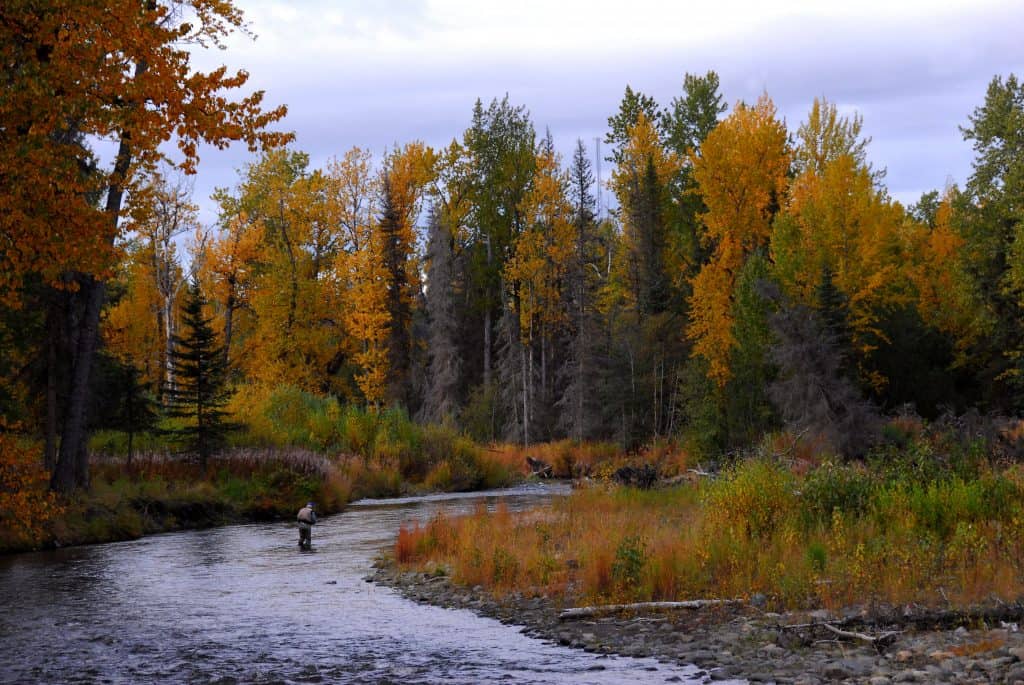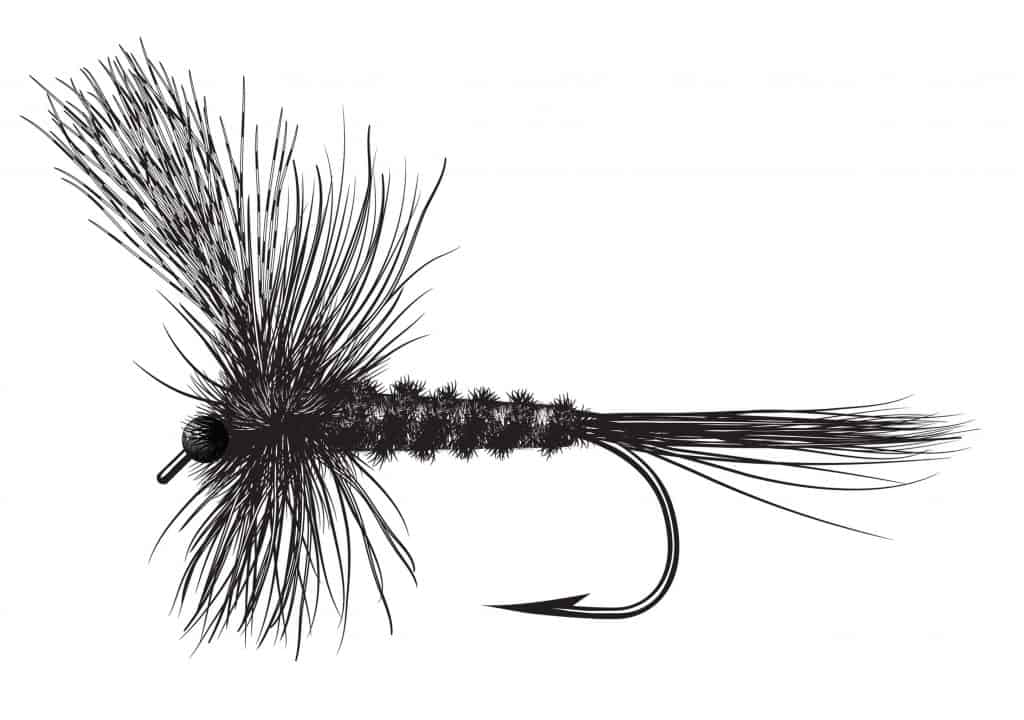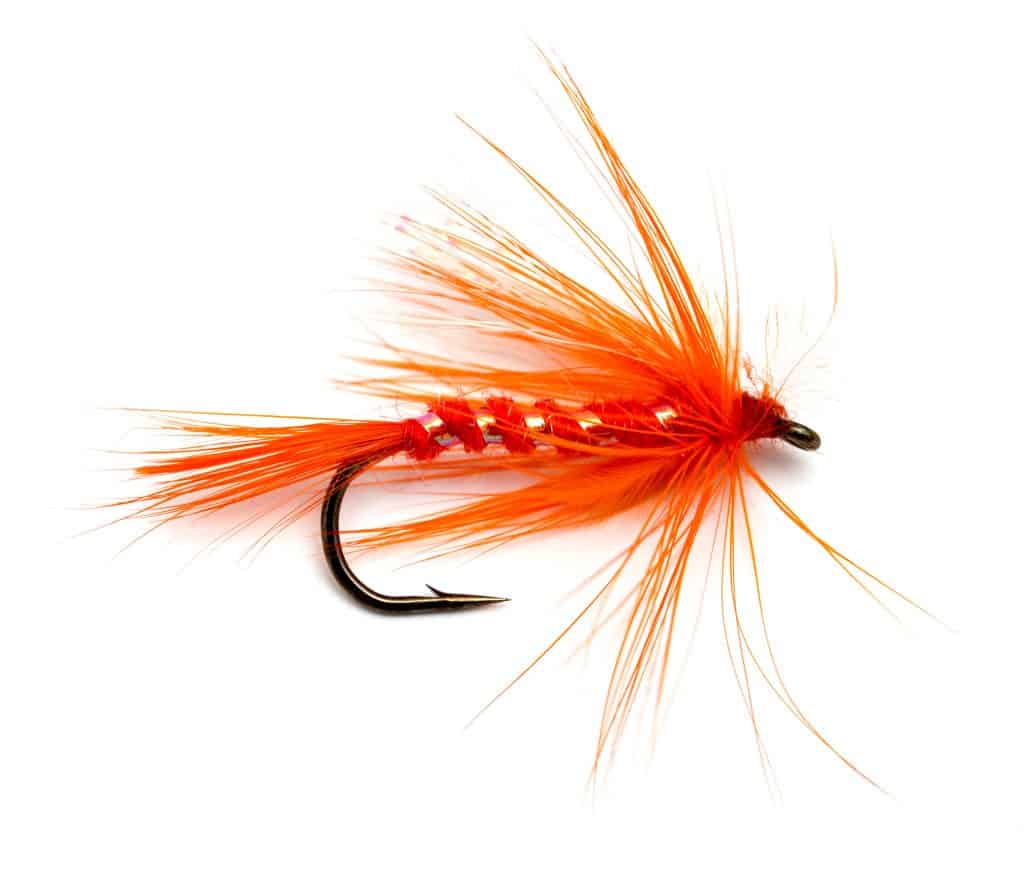
I have recently developed quite a passion for fly fishing. After learning about other types of flies in fly fishing I did some extensive research on what a wet fly is in fly fishing.
So, what is a wet fly in fly fishing? Wet flies in fly fishing are fake flies that are made to mimic insects that are under the water’s surface. Wet flies are designed to imitate all sorts of insects such as aquatic insects and those that have been swept under the water.
There is a whole lot more to a wet fly used in fly fishing than meets the eye. I researched what some of the best wet flies on the market are, as well as why you should try out this style of fly fishing. I also have added some popular techniques that can make one’s fishing trip much more successful.
Best Wet Flies to Fish With
Like any other type of bait, there are tons of different wet flies to choose from. Believe it or not, the choice of a fly largely impacts the fishes choices of whether or not it will bite. It is important to have an arsenal of different flies because each one can be great in different circumstances. Below I made a list of the top 3 wet flies that to purchase.
- The Woolly Bugger
- The Gold-Ribbed Hare’s Ear
- The Crayfish
The Woolly Bugger is widely known to be one of the very best and versatile wet flies on the market. This fly is extremely useful because it can be used to catch all types of trout and many other species of fish. The Bugger is adept and exceptional at imitating plenty of different underwater insects, making it resemble most of what any fish is used to eating. The colors and beads make it even more interesting and desirable to the fish. Any good fly shop will have plenty of these in stock
The Gold-Ribbed Hare’s Ear is another wet fly that deserves a place in every fly fisher’s tackle box. This fly is special due to its visual
The Crayfish is less commonly put into every fisher’s tackle box, but is no less efficient for fly fishing. It can prove to be a secret weapon to those who utilize it. Crayfish are everywhere in all types of water bodies, whether they be fresh or salt water. When you put The Crayfish in your tackle box you open yourself up to a whole new world of possibility and imitative capabilities. Crustacean flies are important regardless of where you’re fishing.
Although these three wet flies are great options to always have with you when you are going to fly fish with wet flies, you are not limited to them. There are tons of different types of wet flies out there on the market that are fantastic. In some cases other types of wet flies might even be better for certain types of fish than the ones that I have listed here.

Why Fly Fish With Wet Flies?
People say that 90% of a fish’s food source comes from bugs that they find under the water, so a wet fly is designed to appear just like those insects. Most times fish just don’t make it to the surface to hunt for food and they stay lower in the water to find their food source. Wet fly fishing gets you right down to where you need to be in order to get ahold of that big amount of fish that tend to stay down lower.
Not only is fishing with wet flies likely the most effective ways to fly fish, but it is also extremely fun experience. Many love this because they can get in the water and and see the whole experience unfold. Most of the time the fisher’s flies are relatively close to them. Due to the fact that the wet flies aren’t supposed to go too deep or far from the surface the fisher can watch as the fish come and bite on their hooks. Many love the joys of fishing with wet flies and find it to be a great experience.
Another pro to doing this is that wet fly fishing is not as challenging as other ways of fly fish such as fishing with dry flies. It doesn’t take as much experience to get it down. There are more fish hunting under the surface of the water instead of the top making it a lot easier for anyone to get a good catch
Tips for Fishing With Wet Flies
Depth
Depth makes a big difference when
Fish Upstream
Fishing with wet flies upstream can be very effective. You can do this with any type of wet fly and see great results. If you cast the line upstream the water will move your fly in a way that makes it look alive and real to the fish. This further increase the chance they’ll have to notice it and ultimately go in for the bite.
Location
Wet flies are best used in smaller rivers and streams. This is due to the fact that if the water is too deep or moves too fast fish not only won’t notice your fly but you will quickly lose your line. Some bigger braided rivers that have smaller channels will still do, the key is to stay in areas that have a gentle current with the right depth. A good rule of thumb is to keep the depth of the water between knees and your waist.
Give Life to Your Line
In streams where the current is slow, it is a great idea to do some subtle pulls on your line. This gives life to the wet fly making it imitate even better the fish’s normal prey. If this isn’t done a fish might not even notice its presence or not trust it to be a real food source and pass it by.

Related Questions:
What are dry flies in fly fishing? Dry flies in fly fishing are fake flies used as bait to imitate flies in a fish’s food source that land on the water’s surface. A dry fly is designed to float on top of the water’s surface until bitten.
What is the difference between wet flies and dry flies in fly fishing? Wet flies are designed
What are nymph flies in fly fishing? Nymph flies are basically the same as wet flies but usually don’t have wings. They were initially designed to even better imitate insects and
